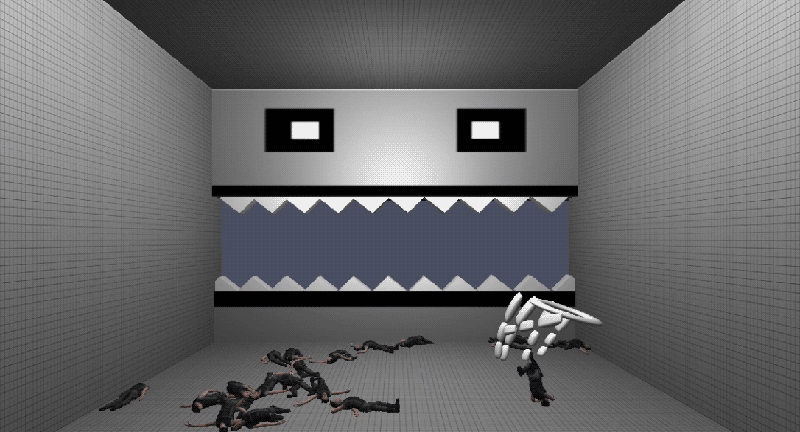Escape the Boscopalyse is a short game made for The Bosco’s Hack Week 2019, which had a theme of Apocalypse vs A New Age. It is a satirical game based on real events that features a 3D scan of myself as the player character, which you can play here.
Every January, The Bosco held a Hack Week, both as a form of team building and as a way to test out new ideas. After unveiling the theme, any employee could pitch an idea to the rest of the company. Afterwards, everyone was free to join whichever team they wanted.
Before we even had the prompt, I knew I wanted to lead a team to conduct further research on 3D scanning. Though I had played around with photogrammetry, Kinect scanning, and using a Structure Sensor before, I hadn’t delved as deep as I had wanted. I prepared a deck full of gifs and pitched the vague idea of making a video game revolving around scanning people at The Bosco. I explained the technologies I was considering and had a few possible ideas for mechanics such as a ragdoll experience with a Leap Motion, a fighting game, and a third person shooter, but I made it clear I wanted to come up with the idea for the content as a team.


Three other people were enticed by my pitch and signed up to join my team. I organized a brainstorming meeting, and we quickly came to the idea of making a game based on an incident a few months prior when a heavy rain had flooded the basement where we kept our booths and expensive equipment. It felt very apocalyptic at the time as we had to drain the water, test all the equipment, and relocate everything; it was perfect for the theme. We also agreed the win state should involve reaching the roof, which had been locked by our landlord due to other tenants in the building leaving their cigarette butts up there.
I conducted research into different apps and newer programs for 3D scanning and, after some experimenting, determined the Structure Sensor to be the best option given the team budget, so I ordered one and began to make the game.
Once the Structure Sensor arrived, I showed the rest of the team how it worked, and we spent one afternoon together scanning each other and sending the models to ItSeez3D to get the final outputs. We even convinced the aforementioned landlord to let us scan her. Once the scans were complete I used Mixamo to quickly add animations to them, and then I imported everything into the Unity project I was working on. Meanwhile, other members of the team helped source 3D assets to use for the game and composed music for each of our scenes.
We talked about making more than one level, but I was intent on making sure we had a complete game before going out of scope. A few late nights later we had a finished simple maze runner with a start screen and win and lose states: animations of the team smoking on the roof if the player won, and an animation of our landlord instructing the player to vacate the building if they lost.
We presented our game to the company, and I’m proud to say it was very well received. We won the competition, and I was given a tiny award as commemoration for leading the team. This project was incredibly satisfying not because we won, however, but because we worked really well together, learned new technologies, and made something that had everybody at the company bewildered and laughing.
Roles: Software development, Game design, Creative lead, Team lead, Ideation facilitation, Research, Asset Management
Made in collaboration with Will Kunkel, David Deberry, and Adam Shaljian.